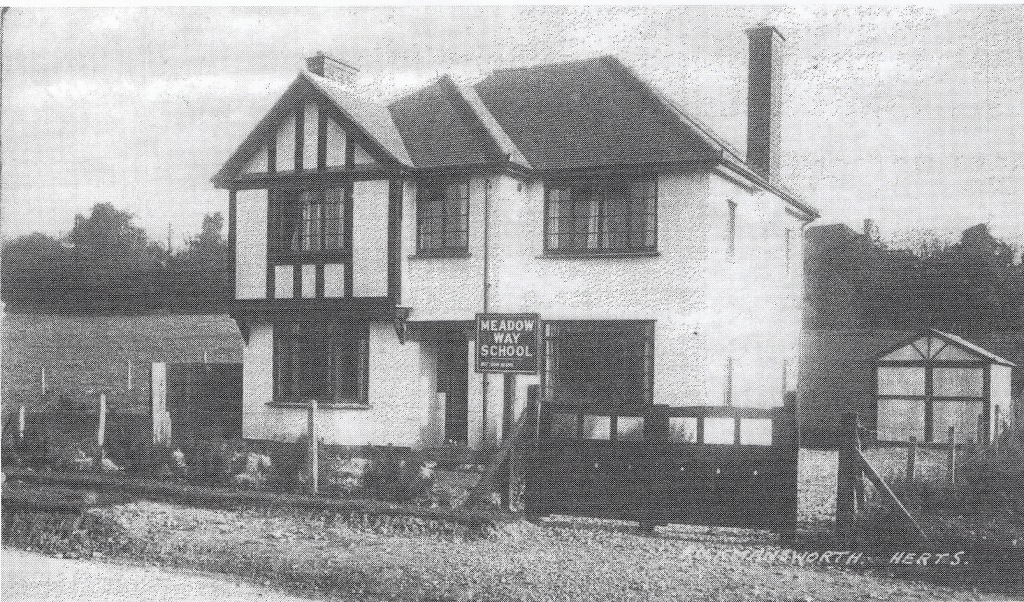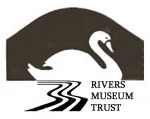There have been a few Rickmansworth myths, one being the connection to Wembley stadium, covered in a previous blog post. The other one is the title of this post. Trying to prove they are not myths but are true is a difficult and time consuming exercise. For many years the story was perpetuated by Mr Patrick Moore, a previous Headmaster of York House School near Croxley Green, in his book ‘The History of Redheath’ from which some of this blog was taken. Moneyhill House was about a mile from the centre of Rickmansworth standing back a little from Uxbridge Road towards Denham (Meresworth Care Home now occupies the grounds). Although mainly Georgian, built in 1722, with a fine façade, it had “an attractive Elizabethan hall and fireplace and a good Jacobean staircase”.


It was said "to have originally been a Dower House and Cardinal Wolsey himself had slept in it" (this I cannot verify, perhaps in a later blog). Several eminent people had previously lived there. It housed at various times, Samuel Salter, a locally famous brewer (previous blog) and, in 1881, Mrs Harriet Walker, patron of St Peter's Church. Another owner was William Plaistowe, who is quoted to have been in partnership in a Rickmansworth Bank, which failed in 1826 (unsubstantiated). Thomas Fellows brought up a family there and "trained in law and high-class cricket". In the 30-year gap in the history of the house up until 1942, it is known that it had been a nursing home then "it had been, for some time, run very unsuccessfully as a hotel by two elderly ladies who were in continuous trouble over their lack of black-out precautions and who kept 23 cats".
Other residents were: Hon Reginald Capel, son of Earl of Essex and director of the Great Northern Railway. Apparently Lord Ebury is also thought to have owned it late in the 19th century, and Thomas Andrews designer of the Titanic who went down with it in 1912.
After much research I could not find any truth in the assertion that Thomas Andrews lived at Moneyhill House. He was Irish and lived in County Down, Northern Ireland. He was also managing director and head of the drafting department of the shipbuilding company Harland and Wolff, the company that actually built the Titanic.

Photo Redheath final destination of York House School
York House School was founded in September 1910 by Rev. Cambridge Victor Hawkins at 98 Broadhurst Gardens, Hampstead. The school was housed in what was “an ordinary semi-detached suburban house with a back garden converted into a hard playground. Behind the rear garden fence ran the Great Central railway track from Marylebone Station and beyond that the Metropolitan Railway. In about 1928 the school moved to 1 Crediton Hill in Hampstead. Soon another move occurred to 1 Lymington Road. By 1937 the school was at 26 Maresfield Gardens in Hampstead NW3. At this time Rev. Hawkins sold York House – the school but not the building – to Mr Arnold George Francis White.
As war clouds gathered on September 28th 1938, following “a fierce speech from Hitler”, Mr White wrote to his wife of his concerns about the possible need to arrange evacuation. Parents began to be alarmed at the prospect of staying in London. Every morning for a week in September 1939 the school assembled, and eventually all were marched to the station and taken by train to Rickmansworth, where the boys were billeted in various houses. This was not a problem since it was still officially holiday time. Just after term had officially begun, Mr White was able to rent “Cremore” at 10 Cedars Avenue Rickmansworth then spreading into number 12. Only 22 boys remained, all that had survived the original move.

Meadow Way School
In early 1942 Miss Hennings owned a Meadow Way School which she decided to sell, Mr White duly acquired the School and its boys and girls. The summer term began with juniors at Meadow Way and seniors in Cedars Avenue.
As the school grew new premises were needed. In September 1942 the owner of “Cremore”, a Mrs Phillips, gave the school three months to quit. Meadow Way was put on the market with the intent to amalgamate the two schools. A court case ensued in April 1943 between Philips and White after the 3 months had expired. Verdict for the plaintiff with costs, but York House School was given 4 months more to find new accommodation. They frantically searched for somewhere else and Moneyhill House came to their notice. The Ministry of Works granted a licence for repairs necessary to enable the school to move into Moneyhill House on September 30 1943. They did not have gas but this was later supplied on October 6. Numbers rose steadily and the Autumn term 1945 saw 123 boys at the school.
The decision to remain in Rickmansworth after the war and not to return to Hampstead was clearly the right one. The school was duly “recognised as efficient by the Board of Education” and began to compete increasingly successfully for local scholarships. York House School remained at Moneyhill House until 1966, during which time a pupil, who would become Sir John Sulstone, 2002 winner of the Nobel prize for medicine, attended the school.
The roof became unsafe at Moneyhill House and the decision was made to move. The school looked at various places and decided on Redheath, another house that had faced the prospect of demolition. Finally Moneyhill House was sold for £70,500 and Redheath, with 48 acres, was purchased for £45,000, the owner, Lord Poole, wishing to make a quick sale!
Thomas Andrews never came to Rickmansworth. There is, however, a connection, which Rudi Newman from Rickmansworth Library has explained to Fabian Hiscock (Chairman TRMT) and has now researched more fully, as follows
Helen Barbour (b. 1884) had nearly married Henry Pierson Harland, one of the family of Harland and Wolff, but in the end had married Thomas Andrews. Their daughter Elizabeth was born in 1910. Some time after Andrews's death in 1912 (died with sinking of the Titanic) she returned to and, in 1917, married Henry Harland, (in the 1939 Register he appears as "Shipbuilder. Engineer. Head of Harland"). He was by this time in a senior position in Harland and Wolff's London office.
They lived for a time in Rickmansworth, at Moneyhill House. The electoral register had them in Rickmansworth between 1921 and 1927, later moving to other properties in the area, possibly Sarratt, then Aldenham - the Directories for those years would no doubt confirm their residence. The 1939 Register records them as living at Otterspool House, Radlett with her daughter Elizabeth Andrews and her daughter by Harland, Louise, b. 1920. Widowed for a second time in 1945, she died in Antrim Northern Ireland in 1966. So while Thomas Andrews never lived here, his widow did.

References The History of Redheath by Mr Patrick Moore Watford Observer 30 May 2003 Rudi Newman Rickmansworth Library Fabian Hiscock Chairman TRMT Claire Roffe Multimedia Chairman TRMT. Les Mead Vice Chair TRMT and Blogger.

Good read and very interesting – Thank you
LikeLiked by 1 person
Really interesting article!
Out of interest, do you know where the name Moneyhill came from?
LikeLike
Sorry, not at the moment. I will look it up in the Kellys Directories and maps, which we have in the museum. I suspect it’s quite old, I am sure it’s mentioned on maps when Belfrey Lane (opposite Halfway House pub) was one of the oldest lanes in Rickmansworth, before even Nightingale Rd.
LikeLike